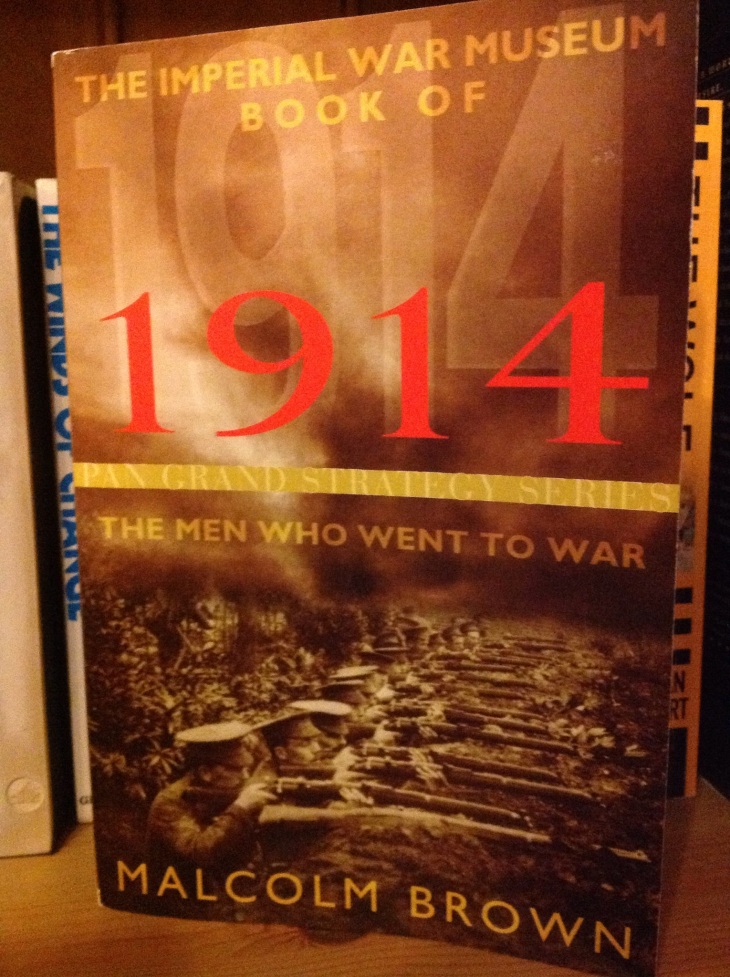Proving that important anniversaries pique the interest of the casual reader of history, I picked this up as my view of the First World War is made up of the pieces I can remember from GCSE History plus Blackadder Goes Forth (Who can forget Baldrick’s war poetry).
After a period as a BBC documentary producer, Malcolm Brown became a full time writer and historian. He has written several acclaimed books in which he has brought the experiences of the First World War to life using the extensive archives of the Imperial War Museum.
I did wonder whether this book might be a dense explanation of the military manoeuvres of the first year of the war but found it to be a very well written account of the social and political realities of 1914 as well as a page-turning account of the outbreak of war and the military stalemate that led to hundreds of miles of trenches from the coast to Switzerland.
Trench warfare was not anticipated but the advancement of weaponry meant that soldiers on both sides soon moved on from digging rudimentary scratches in the ground and fox-holes to the deeper, more complex and fortified trenches of popular memory. It amazed me that most soldiers started the war in soft caps as steel helmets only became the norm, albeit reasonably quickly, to provide some protection from shrapnel and sniper fire.
It’s incredible to note the number of young men who rushed to join up for the sake of the Empire, or felt that they should, following tremendous pressure from their peers, politicians, the army and the clergy. White feathers were routinely given as a sign of cowardice to men of fighting age who were not dressed in military uniform, regardless of the reasons why. The present general unwillingness of Western governments to put ‘boots on the ground’ in overseas trouble spots makes one wonder whether there would be such a clamour to devote significant troops in future or the willingness of the British people to push young men and women into fighting.
The diaries and letters that Malcolm Brown draws on to illustrate the narrative of his book are wonderfully expressive and speak volumes about the character of the soldiers. Bravery in the face of appalling conditions and experiences is summed up in the writing, whether this is stoic, excited or upbeat to allay the fears of family back home. Even when there has been a large battle the writing is rarely anything less than measured.
The book sweeps us through from the assassination of Archduke Franz Ferdinand as the event that sparked mobilisation, through the key battles in Belgium and France, the development of the trenches, fear of enemy nationals at home, the global spread of conflict and the almost mythical first Christmas of the war.
This is a well researched and impressively written book that does justice to the men and women whose stories are briefly revealed. Highly recommended.
